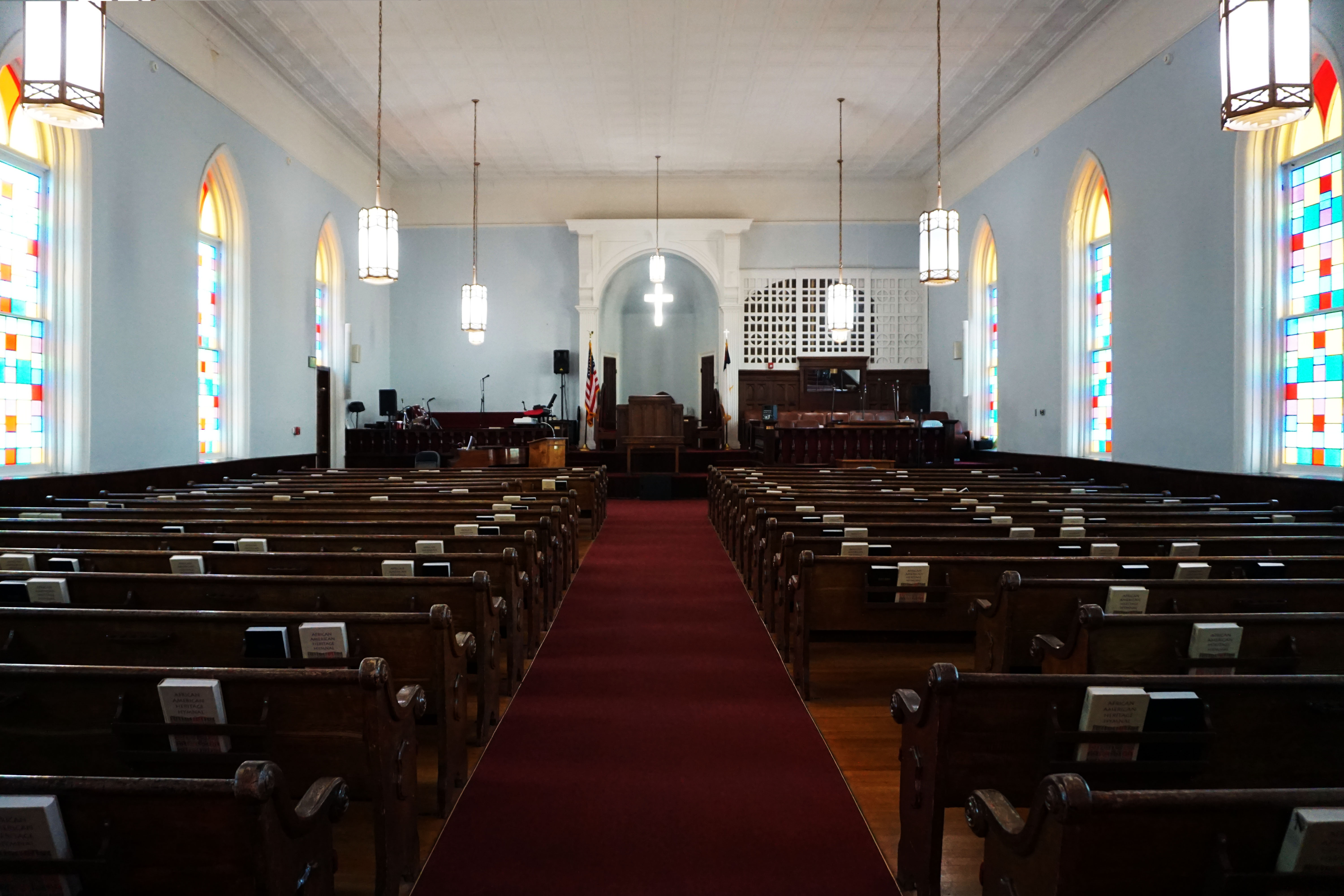A Pilgrimage to Montgomery, Alabama
Getting Goosebumps at Dexter Avenue King Memorial Baptist Church

In December 2019, I traveled to Montgomery, Alabama, to visit The Legacy Museum and The National Memorial for Peace and Justice. It was my first experience in the Deep South.
For the past 30 years I have been preoccupied with, and driven to understand, racial injustice in America. To me it’s the central American story, the great conundrum. The writings of Martin Luther King, Jr. and James Baldwin led me to W.E.B. Dubois, and Dubois led to Ralph Ellison, Toni Morrison, Alice Walker, and Langston Hughes. Cornel West, Isabel Wilkerson, and Gerald Horne connected me to other black writers and thinkers who have illuminated and laid bare the contradiction lying at the heart of American history, the profound disconnect between the soaring rhetoric of our founding documents and the hard reality experienced by African Americans.
One cannot visit Montgomery without paying a visit to the Dexter Avenue King Memorial Baptist Church. For me, it was something of a pilgrimage. Dr. Martin Luther King Jr. is one of my personal heroes. We often forget he was a young man of only 39 years when he was assassinated. What King accomplished during his brief life is astounding. Everywhere I went in Montgomery I met friendly, kind people, but I got the full treatment at Dexter Avenue King Memorial Baptist Church.
I was standing outside reading an inscription when the church door opened and a beaming African-American woman wrapped her arms around me and invited me inside. Before I knew it, I had joined a small group on a tour of the historic basement and church. It was from this basement in December 1955 that a young Martin Luther King Jr. and other leaders of the black community conceived the Montgomery Bus Boycott, the first sustained mass protest against segregation in the United States. The 382-day boycott thrust Dr. King into the national spotlight. In the eventful years that followed, the FBI would label Dr. King the most dangerous and effective Negro leader in the country. I got goosebumps when I stood behind the lectern from which Dr. King spoke.

The day after the tour was Sunday. At 10:30 a.m. I was in the church, seated in the last row, watching as the congregants filed in, men in suits, women in dresses, high heels, and hats. Many people came up to me and asked where I was from. The current pastor, Cromwell A. Handy, shook my hand and thanked me for attending. Other visitors included a group from South Africa and a couple from Australia. It so happened that the service that Sunday marked the 142nd anniversary of Dexter’s founding. Before the sermon was delivered by a guest pastor named James Nuckles from nearby Stonetank Antioch Baptist Church, there were liturgical readings and singing by a red-robed choir, their lovely voices rising to the ceiling, bringing tears to my eyes.
Reverend Nuckles started slowly, but in no time had built a head of rhetorical steam that had people calling out amen! yes! that’s right! Reverend Nuckles had a rhythm and cadence, a preaching style honed over decades; his voice rose like a thunderclap then fell to a whisper. It was a spellbinding experience I will not soon forget. The sense of community, continuity, service to others, and history was palpable.
John Quincy Adams wrote, “For slavery is the great and foul stain upon the North American union.” I don’t know precisely why this history strikes such a chord with me, but it does, even though I was born and reared in Santa Barbara and have lived here for more than 50 years, insulated from many of the uncomfortable racial, economic, and cultural realities of American life. Growing up I encountered few black people. Although my memory may be faulty, I recall only two African-American students in my graduating class at San Marcos High School in 1977. It wasn’t until I enlisted in the Air Force that I had significant personal interaction with black people. During my five years of service I had many black co-workers and acquaintances, but I was still too young and uneducated to grasp how different their American reality was from mine.
In my America I was never considered a threat to someone’s person or property, never immediately judged and found suspicious, less than, undeserving. White privilege is real; it allows me to pass freely and be given the benefit of the doubt, an opportunity, a second chance.
Visiting Montgomery, walking where Dr. King and Rosa B. Parks walked, where George Wallace and Jefferson Davis walked, where so many unsung people refused to accept the tyranny of Jim Crow segregation, Ku Klux Klan lynch mobs, poll taxes and literacy tests, seats in the back of the bus, white and colored drinking fountains, made me appreciate the resilience of African Americans. I saw glimpses of this resilience in the eyes of some of the congregants at the Dexter Avenue church. It was a knowing look that said the unimaginable can be endured.
When it comes to the history of race relations in America, I think Maya Angelou said it best: “History, despite its wrenching pain, cannot be unlived, but if faced with courage, need not be lived again.”




You must be logged in to post a comment.